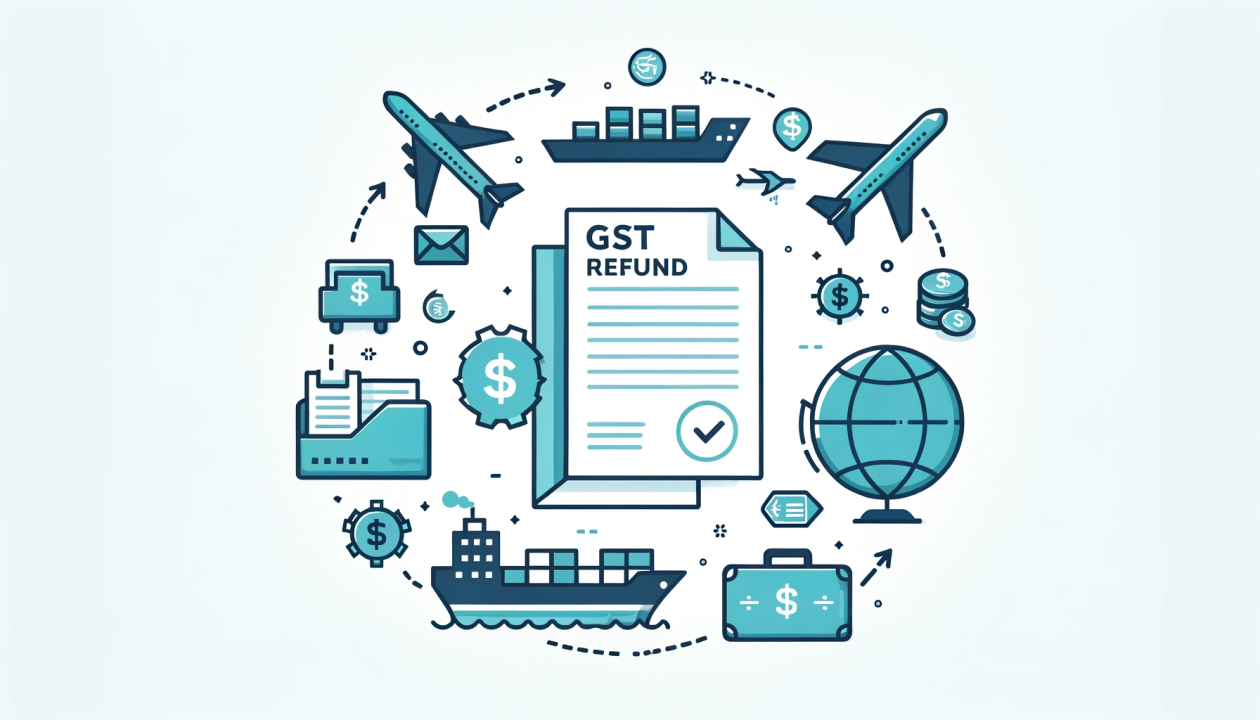
Welcome to “Navigating Export of Services Refunds: Your Comprehensive Guide.” For businesses engaged in exporting services, understanding the intricacies of claiming refunds is paramount. This comprehensive guide aims to provide you with a step-by-step roadmap through the refund process, ensuring that you can navigate it with ease and efficiency. From preconditions and document requirements to application procedures and tracking, this guide covers everything you need to know to streamline your refund claims effectively. Whether you’re a seasoned exporter or new to the process, this guide will equip you with the knowledge and tools to optimize your refund experience.
Are you a business engaged in exporting services and wondering about the nuances of claiming refunds? Understanding the process can save you time and resources. Here’s a detailed FAQ guide to help you navigate the refund process seamlessly.
1. Preconditions for Filing Refund Application:
To file a refund application on account of Export of Services (with payment of tax), ensure the following preconditions are met:
- Active GSTIN registration during the refund period.
- Filed Form GSTR-1 and GSTR-3B returns for the relevant tax period.
- Paid taxes on the exported services.
- Have BRC/FIRC number details for the export document.
2. Documents Required for Refund:
Upload necessary documents as per CGST Rules or Circulars. Statement 2 with export document details and Integrated Tax is mandatory. You can upload up to 10 supporting documents, each up to 5MB in size.
3. Where to File the Application:
Submit Form RFD-01 on the GST portal under the ground of refund “Exports of services with payment of tax.” The application will be assigned to a Refund Processing Officer for processing.
4. Multiple Tax Periods in One Application:
You can file for multiple tax periods from different financial years in a single refund application. Whether separate applications or combined, the choice is yours.
5. Filing Nil Refund:
If you have no refundable documents for certain periods, you can file a nil refund application. Once filed, you won’t be able to claim a refund for that period in the future.
6. Combining Nil Period with Refund Period:
You can combine nil refund periods with refundable periods in a single application. Choose the appropriate tax periods and file accordingly.
7. Rectifying Mistakes in Tax Declaration:
If you wrongly reported tax amounts in your returns, you can still file a refund application until March 2018. Ensure accurate reporting in Form GSTR-3B to avoid issues.
8. Saving the Application:
You can save your refund application for up to 15 days from creation. After this period, the saved draft will be purged from the GST database.
9. Mandatory Statement for Document Details:
Statement 2, detailing export documents with Integrated Tax, is compulsory for filing a refund application. This statement is validated against data from Form GSTR-1.
10. Utility for Uploading Statements:
Download the offline utility from the refund application page to upload document details. This tool facilitates efficient submission of necessary documents.
11. Purpose of Validate Statement Button:
Use the Validate Statement button to ensure accuracy in document data. Validation compares details provided with those in Form GSTR-1.
12. Updating Statement Data:
You can edit/update statement data even after validation. Delete and re-upload if necessary, ensuring the refund amount matches tax paid in Form GSTR-3B.
13. Previewing the Application:
Before submission, preview the refund application in PDF format to spot any inconsistencies or errors.
14. Crediting Refund Amount:
The refund amount will be credited to a bank account linked to your GST Portal registration. You can select the desired account during the application process.
15. Tracking Application Status:
Track your refund application status on the GST portal under “Refunds” > “Track Application Status.”
16. Understanding ARN:
Application Reference Number (ARN) is generated upon filing a refund application. It’s sent to your registered email and mobile number.
17. Downloading Filed Refund Application:
Access your filed refund application under “User Services” to download it for your records.
18. Processing of Refund Application:
Once ARN is generated, the refund application is assigned to a Refund Processing Officer. Track its status and await disbursement.
19. Bank Account Details for Refund Application:
You can’t enter bank account details while applying for this refund type if you’re a casual or non-resident taxpayer with canceled registration.
Navigating the refund process for exported services involves understanding prerequisites, document submission, and tracking procedures. By adhering to guidelines and utilizing available tools, you can streamline your refund claims effectively.
LinkedIn Link : RMPS Profile
This article is only a knowledge-sharing initiative and is based on the Relevant Provisions as applicable and as per the information existing at the time of the preparation. In no event, RMPS & Co. or the Author or any other persons be liable for any direct and indirect result from this Article or any inadvertent omission of the provisions, update, etc if any.
Published on: May 28, 2024
